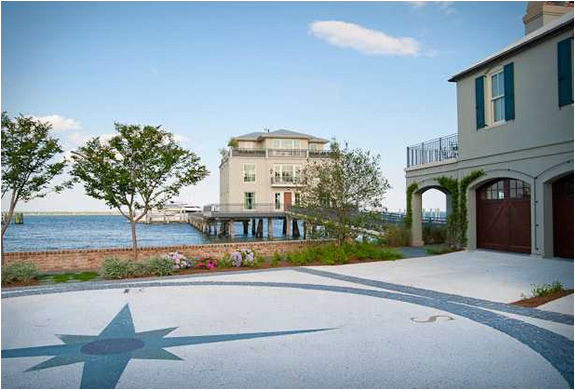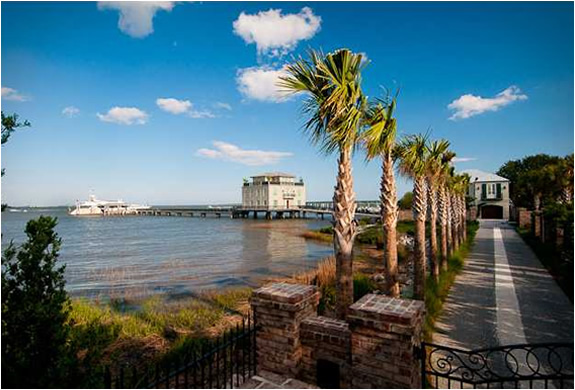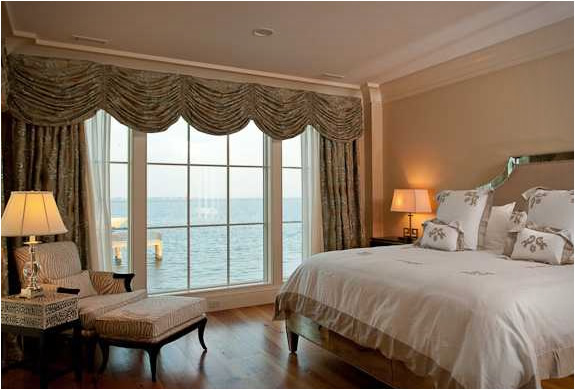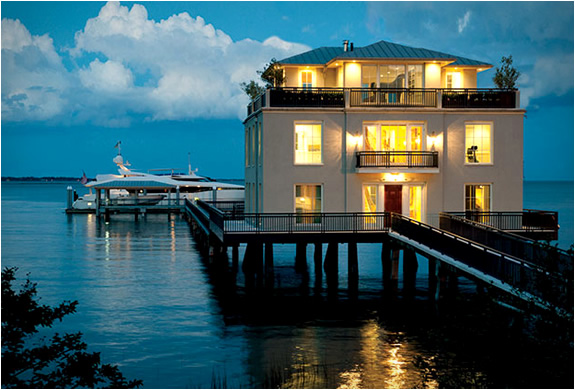Why Some Homes Sell Faster
Congress Restores FHA Loan Limits
 The U.S. House and Senate yesterday restored FHA loan limits to the level they were at before they were allowed to expire at the end of September. As a result, the limits will rise to 125 percent of the area median home price from 115 percent, up to a maximum $729,750 from $625,500. NAR estimates that several hundred counties where FHA loan limits fell at the end of September will now rise back up to the previous level.
The U.S. House and Senate yesterday restored FHA loan limits to the level they were at before they were allowed to expire at the end of September. As a result, the limits will rise to 125 percent of the area median home price from 115 percent, up to a maximum $729,750 from $625,500. NAR estimates that several hundred counties where FHA loan limits fell at the end of September will now rise back up to the previous level.
“The reinstated loan limits will help provide much needed liquidity and stability to communities nationwide as tight credit restrictions continue to prevent some qualified buyers from becoming home owners and the housing market recovery remains fragile,” said NAR President Moe Veissi in a statement released last night.
President Obama is expected to sign the legislation shortly. The restored loan limits are in a broad-based bill that includes funding for a wide variety of federal operations and programs.
The maximum conforming loan limits for secondary mortgage market companies Fannie Mae and Freddie Mac also expired at the end of September, but lawmakers did not include a restoration of those limits in the bill. As a result, conforming loan limits will remain at 115 percent of the area median home price, up to $625,500.
Once President Obama signs the bill, the limits will go into effect. FHA will release a mortgagee letter to its approved lenders thereafter, containing a list that’s been updated to reflect the new limits. NAR analysts say it will take the agency a short period to update its database and release the mortgagee letter, maybe a couple of weeks.
The funding bill also extends the National Flood Insurance Program (NFIP) until Dec. 16 to allow lawmakers time to consider long-term authorization of that program, which is an NAR priority.
The Fuzzy Math of Home Values
From a report in the Wall Street Journal.
The calculations behind online estimates is adding confusion to an already tricky housing market.
Personally, I have found the Zillow tool great fun and often informative of trends and high-level statistics. The reality is, that as a valuation source, Zillow can’t possible know the intricacies of the home, street appeal, neighborhood conditions etc.
Study reveals second home market is improving, what does the future hold?
Home buyers in 2011
The 2011 National Association of Realtors® Profile of Home Buyers and Sellers surveyed 5,708 home buyers and sellers, learning that the demographics of home buyers and types of homes being sold has shifted drastically this year, mostly due to job instability and insecurity as well as tightened lending.
Now, more buyers are married, older and have higher incomes and there is a striking lack of diversity in the home buyer pool with 85 percent of American buyers identifying themselves as Caucasian, and almost all were born in America and primarily speak English.
Why are consumers buying? They cite a desire to own a home as a top reason to buy with affordability close behind. Most people purchased a home because of life changes like a new baby, relocated job or empty nest, and because it was “just the right time to buy.”
What about second homes?
The NAR study reveals that 19 percent of recent home buyers own more than one home, which is very promising as this number is up five percent in a year that various other reports indicate the economy is so bad that buyers are hesitant to buy a first or second home. “The increase speaks to those who are able to purchase a home in this market,” NAR reports, reiterating that stable buyers are not the buyers falling off of the map as they can qualify for a mortgage despite tightened lending.
According to the study, 74 percent of buyers over the age of 65 own a second or third home, and only one percent of buyers aged 18 to 24 owning more than one property. Ten percent of buyers aged 45 and up own an investment property in addition to the home they most recently purchased.
What the future holds
So, the second home market is actually performing well because it pulls from a buyer pool that is financially stable, but what are buyers’ plans for the future?
We reported that Trulia’s American Dream Survey revealed that two thirds of consumers over the age of 55 still anticipate they will purchase a second home in the future, while Coldwell Banker’s study on Baby Boomers offered similar results, noting that 87 percent of agent/broker respondents said that they have baby boomer clients who already own or are looking to own a second property for investment.
The Coldwell Banker study split Baby Boomers up into two groups, the first aged 47 to 55 and the other aged 56 to 65, which revealed very different results in buyer habits. Regarding second homes, more than one in three younger boomers are interested in buying a second home while only one in five older boomers are interested in buying an investment property.
Although this market is performing well and buyers have future plans, the disparity between those capable and interested and investing and those that are on low, fixed incomes is becoming wider. A recent Pacific Investment Management Company, LLC (PIMCO) report entitled “Are There Any Rungs Left on the Housing Ladder?” revealed that many seniors are becoming renters as they are now required to contribute 10 percent more of their pay to their retirement savings and have less disposable income, limiting their ability or willingness to upgrade their home or buy second homes which has long been a tradition in this segment of America.
The second home market is healthy, and the buyer pool tends to be older and plans to keep the American dreams of homeownership, land ownership and investment alive, but the haves and have nots, like many demographics in America, are becoming disparate.
I’m here to help: 206-713-3244 – email me. 
Proof That Fannie And Freddie Didn't Cause The Housing Bubble
The role of government agencies in causing the housing bubble continues to be debated endlessly.
As such, it’s always a good idea to have this chart — posted today by Hale Stewart — of various housing bubbles around the world.
If you really think it was all Fannie and Freddie’s fault, then you have to explain why the U.S. just happened to have the same (roughly) arc of a housing boom as basically every other industrialized country all around the world at the same time.
Your thoughts?
Do you want to be neighbors with Bill Gates?
Click image for more information.
3227 Evergreen Pt Rd – Medina, WA – Auction this week.
Let me know if I can help. 206-713-3244 or email me.
Banks severely limit how REO agents phrase MLS listing descriptions – outrageous

Truth in advertising is dead. Thanks, banks.
Someone, somewhere, has decided that truth in advertising no longer matters. Many corporate clients, meaning banks, have started dictating what can, and cannot be said in the MLS. It isn’t about getting the property sold, but “selling” the property. This has made working the REO niche a tad complex at times.
Ultimately, a client is going to require certain things; a minimum amount of earnest money, a proof of funds letter, or a pre-approval. Yet, they are not allowing us to put this information out there for buyers and their agents. Please go back and re-read the first two sentences of this paragraph. Some REO clients are skittish about potentially disenfranchising buyers, or so it has been said, by specifying what types of financing, if any, a home will qualify for, or minimum amounts of EM they, themselves want. Many of the banks, servicers, and asset management companies are now saying what they want during negotiations.
Banks forcing agents to fail
As if listing REOs were a drug experiment going on in a secret lab for Big Pharma, we now have “control words” that will kick back a marketing description. There isn’t exactly a master list of no-no which can’t be used, but it’s basically any ick-tastic phrases in regards to a house. You know, like if house has mold, damaged or missing mechanicals, missing siding, or perhaps is one of those super special REOs that can only truly be fixed with a Blue Tip and about 5 gallons of Kerosene (sarcasm, kind of) and can only be purchased with cash or a rehab loan. We are more, and more frequently not permitted to mention these things in the MLS by many of our clients. Oh, and no photos showing how crappy the condition of a house may be, either.
Since there are about a billion factors that go into the price of an REO listing; it’s not solely up to the discretion of the agent, being able to paint an accurate picture of what is for sale is imperative. A house may have an awesome kitchen, but it makes no difference if the ceiling has fallen down around it due to a burst pipe, and we aren’t able to say a word about it in the MLS. When the reins get pulled, and we are hampered by what can be said, the true, provable things, about a home, we are not doing our jobs effectively.
Yeah, we sell houses. But is it really selling when we are not relaying information to buyers, and other agents that they should probably have? Or is it selling? That cute little spin which often puts Realtors just above or below snakes on the Ten Lists of Most Hated Things.
UNIQUE PROPERTY IN CHARLESTON FOR SALE
Number 2 Concord St in Charleston is a truly unique and truly inspiring property. The property is located adjacent to the Carolina yacht club and was converted to a residence through a monumental construction effort. The end result is a trophy property overlooking Charleston harbor with unparalleled views. The 2.72 acre property includes the main residence and the guest house. The property is a stunning display of luxury and craftsmanship, with absolutely no expense spared. The list of noteworthy features is endless, several highlights include: a covered boat lift, library, wine room with climate control, fully integrated audio visual system, and a programmable window shade system that, with just the touch of a button, captures panoramic 360 degree views of Charleston harbor.









